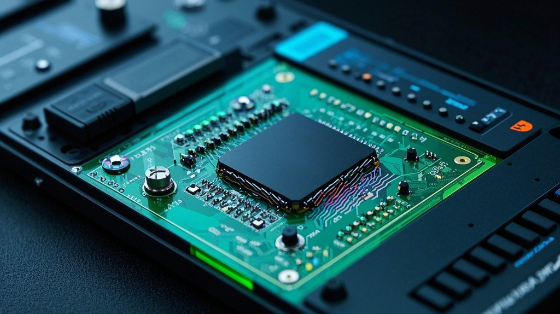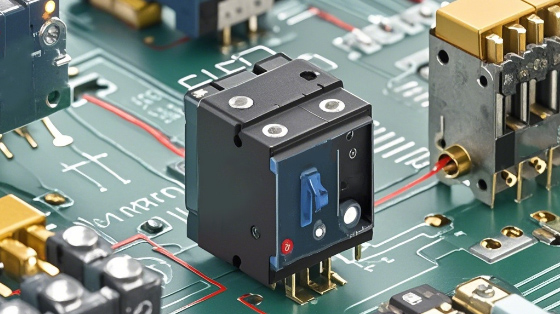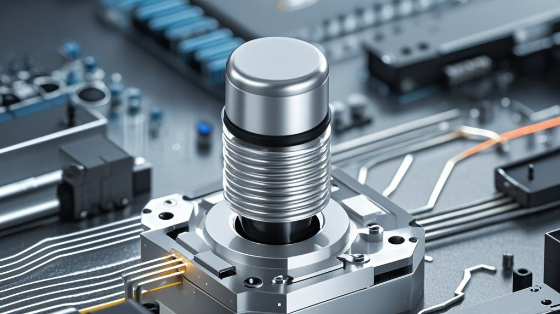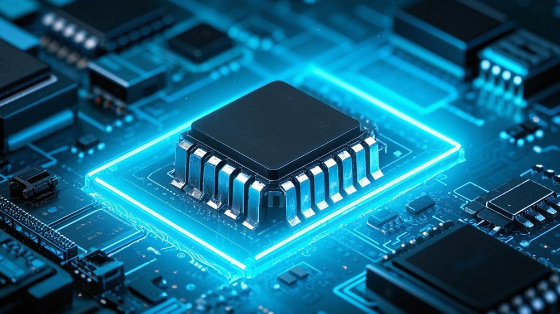In the modern era of entertainment and communication, audio products have become an indispensable part of our daily lives. From the music that accompanies us during our commute to the crystal-clear voices in video conferences and the immersive soundscapes in movies and games, high-quality audio is something we often take for granted. Behind every great audio experience, however, lies a complex array of electronic components working in harmony.
At the heart of most audio systems are audio chips. These integrated circuits (ICs) are specifically designed to process audio signals with precision and efficiency. There are different types of audio chips, each serving a particular function. Digital Signal Processors (DSPs) are a crucial type of audio chip. They are responsible for manipulating digital audio signals, performing tasks such as equalization, noise suppression, and surround sound processing. DSPs use advanced algorithms to enhance the quality of the audio, allowing for customization of the sound according to the user's preferences and the specific requirements of the application. For example, in a high-end home theater system, the DSP can analyze the incoming audio stream and adjust the levels and frequencies to create a more immersive and realistic surround sound effect.

Another important type of audio chip is the audio codec. The codec is responsible for encoding and decoding audio signals. It converts analog audio signals into digital format for processing and storage, and vice versa. This is essential for various audio applications, such as in recording and playback devices. In a smartphone, for instance, the audio codec ensures that the voice calls are clear and that the music and other audio content are reproduced accurately. The codec also plays a role in compressing and decompressing audio files, which is crucial for efficient storage and transmission. For example, when streaming music over the internet, the audio codec reduces the size of the audio data without significant loss of quality, allowing for faster streaming and less bandwidth consumption.
Speakers are another fundamental component of audio products. They are transducers that convert electrical audio signals into sound waves. The basic principle behind a speaker's operation is the interaction between a magnetic field and an electric current. A speaker typically consists of a cone, a voice coil, and a permanent magnet. When an audio signal is passed through the voice coil, which is placed in the magnetic field of the permanent magnet, the coil experiences a force that causes it to move. This movement of the voice coil in turn moves the cone, which then generates sound waves. The design and quality of the speaker have a significant impact on the sound output. High-quality speakers are engineered to reproduce a wide range of frequencies accurately, from the deep bass to the high treble. The size and material of the cone, the strength of the magnet, and the quality of the voice coil all contribute to the speaker's performance.
In addition to speakers, microphones are also essential in audio systems. Microphones are used to capture sound waves and convert them into electrical signals. There are different types of microphones, including dynamic microphones, condenser microphones, and electret microphones. Dynamic microphones are rugged and reliable, making them suitable for live performances and recording in harsh environments. They work based on the principle of electromagnetic induction, where a moving coil in a magnetic field generates an electrical signal in response to sound waves. Condenser microphones, on the other hand, offer higher sensitivity and a more accurate frequency response. They require a power source, usually provided by a phantom power supply. Electret microphones are a type of condenser microphone that uses a permanently charged material, eliminating the need for an external power supply for the polarizing voltage. Microphones are used in a wide range of applications, from recording studios and broadcasting to voice assistants and smartphone voice calls.
The audio circuitry also includes other components such as capacitors and resistors. Capacitors are used in audio circuits for various purposes, such as filtering out unwanted frequencies and coupling audio signals between different stages of the circuit. They can store and release electrical energy, which helps in smoothing the audio signal and preventing distortion. Resistors, on the other hand, are used to control the flow of current in the circuit. They are used to set the gain of amplifiers, divide voltages, and provide impedance matching. For example, in an audio amplifier circuit, resistors are carefully selected to ensure that the correct amount of current is supplied to the amplifier stage and that the output impedance matches the impedance of the speakers for optimal power transfer.
The performance of audio products is evaluated based on several parameters. One of the key parameters is frequency response. A good audio system should be able to reproduce a wide range of frequencies evenly. The frequency response is usually measured in hertz (Hz) and indicates the range of frequencies that the system can handle. Another important parameter is signal-to-noise ratio (SNR). The SNR measures the ratio of the desired audio signal to the background noise. A higher SNR indicates a cleaner and clearer audio signal. Total harmonic distortion (THD) is also a crucial parameter. It measures the amount of distortion introduced by the audio system. A low THD is desirable, as it means that the audio signal is reproduced more accurately without significant distortion.
The future of audio products looks extremely exciting, with ongoing research and development focused on several fronts. One area of significant interest is the development of more advanced audio codecs. New codecs are being designed to provide even higher quality audio at lower bitrates, which will be beneficial for streaming services and wireless audio transmission. For example, codecs that support high-resolution audio formats, such as 24-bit/192 kHz, are becoming more common. This allows for a more accurate reproduction of the original audio recording, with finer details and a wider dynamic range.
Another trend is the improvement of speaker technology. Research is being conducted on new materials and designs to enhance the performance of speakers. For example, the use of lightweight and rigid materials for the speaker cone can improve its response and reduce distortion. Additionally, the development of smart speakers and voice-activated audio devices is on the rise. These devices integrate audio capabilities with artificial intelligence and internet connectivity, allowing for more intuitive and interactive audio experiences. For instance, a smart speaker can understand voice commands, play music from various streaming services, answer questions, and control other smart home devices, all through voice interaction.
In conclusion, audio products rely on a sophisticated combination of electronic components to deliver the high-quality sound experiences we enjoy. From audio chips and speakers to microphones and passive components like capacitors and resistors, each element plays a crucial role. As technology continues to progress, we can expect even more remarkable advancements in audio product design and performance, opening up new possibilities for entertainment, communication, and beyond.
The global audio product market is highly competitive and constantly evolving. The increasing demand for high-quality audio in various applications, such as smartphones, tablets, home theaters, and wearable devices, is driving innovation. However, manufacturers also face challenges. One of the main challenges is to balance performance and cost. While consumers expect excellent audio quality, they also have price constraints. Manufacturers need to find ways to optimize the design and production processes to offer high-quality audio products at affordable prices.
Another challenge is the need to keep up with the rapid pace of technological change. New audio standards and features are emerging regularly, such as 3D audio, object-based audio, and wireless multi-room audio. Manufacturers need to invest in research and development to ensure that their products support these new technologies and remain competitive in the market. Additionally, the issue of audio quality in wireless audio transmission is a concern. Although wireless technologies like Bluetooth have made great progress in recent years, there are still limitations in terms of audio quality and latency. Manufacturers are working on improving wireless audio codecs and transmission protocols to overcome these issues.
In the field of professional audio, such as recording studios and live sound reinforcement, the demand for high-precision and reliable audio equipment is always high. Manufacturers are focusing on developing audio products with extremely low latency, high channel counts, and excellent dynamic range to meet the needs of professional users. In the automotive industry, audio systems are also becoming more sophisticated, with features like surround sound, noise cancellation, and integration with in-car entertainment and communication systems.
In conclusion, the world of audio products is a vibrant and dynamic field. The continuous innovation in electronic components and the pursuit of better audio quality will shape the future of this industry, providing consumers with more immersive and enjoyable audio experiences.





